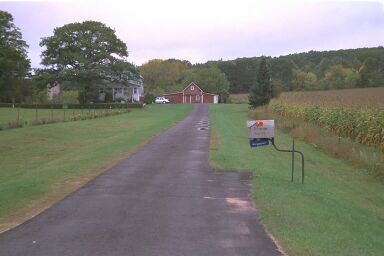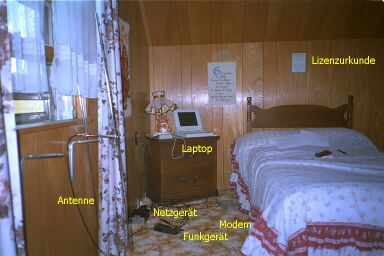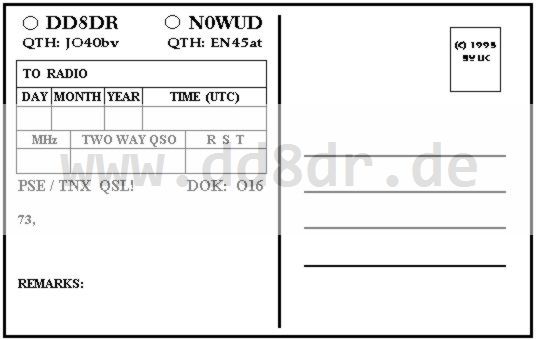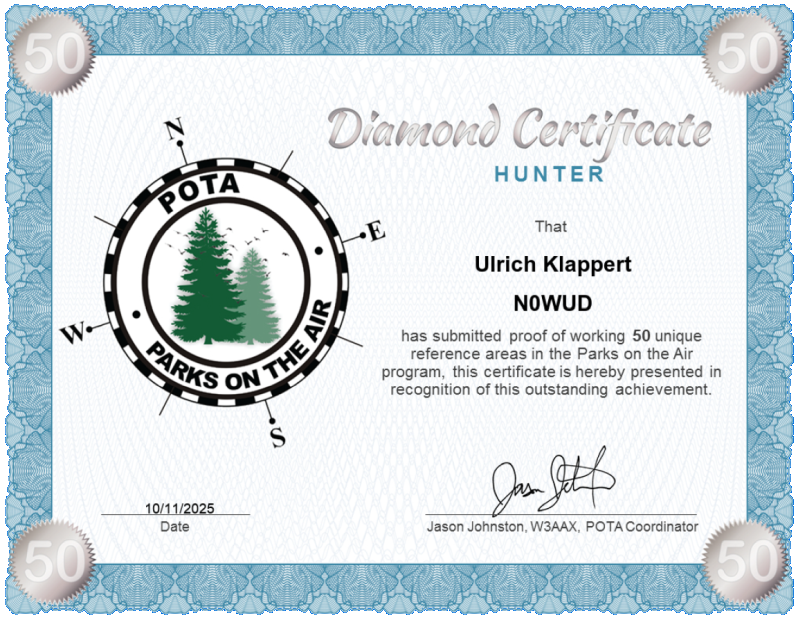


That was my uncle's farm near Spooner (WI) in the 80s
When I visited my relatives there, I usually had amateur radio
equipment with me. Fortunately, there had never been any problems
when entering the country. Because my hand luggage consisted of
various devices and lots of cables, there were sometimes questions
at customs ;-)

My packet radio equipment
Packet radio (PR) is a radio data network used by radio amateurs to
exchange data worldwide. You need a radio with an antenna, a modem
and a computer with the appropriate software. On the picture you can
see my radio equipment. The radio network is by the way free of charge
for the user and works with transmission rates between 1200bps and 19200bps.
However there are also restrictions. For example, no messages with commercial
content may be be distributed. Advertising is therefore prohibited.

The shack of my friend Ted
Ted had the callsign W9AEA (ex KE6WF) and has sadly passed away.
I first met him through packet radio.
He operated the local user access to the PR net and a repeater station
for VHF voice radio (2m band).


Back view
My QSL card
Radio amateurs send each other cards to confirm their radio contacts. On the back side
of these QSL cards all relevant data are noted, like callsign, name, location of the
amateur radio station and date of the radio contact. The front side is usually
decorated with a picture and the callsign.
At radio competitions the QSL cards are scored and depending on the distance covered,
points are awarded.

My American amateur radio license
The license examinations for the American amateur radio license also take place outside
the territory of the USA. In general, anyone with English language skills and appropriate
exam preparation can obtain the license, if he has a postal address in the USA.

On the thirtieth anniversary of my American amateur radio license, I decided to study for an upgrade. After three weeks of intensive study, I was able to successfully complete the General License exam. The picture shows me in the middle with the certificate for passing the exam and three of the examiners.

In March 2025, the time had come: I had registered for the exam for the highest license class “Amateur Extra” and passed. Now I can use all amateur radio bands in the USA without restriction.

After obtaining the highest license class, I naturally wanted to go on air with my American call sign. It is now possible to be QRV from my QTH in Germany with an American remote station. This allowed me to participate in the POTA program with my call sign NØWUD.

Copyright © 1997, Ulrich Klappert, Last Updated: 2025-11-30